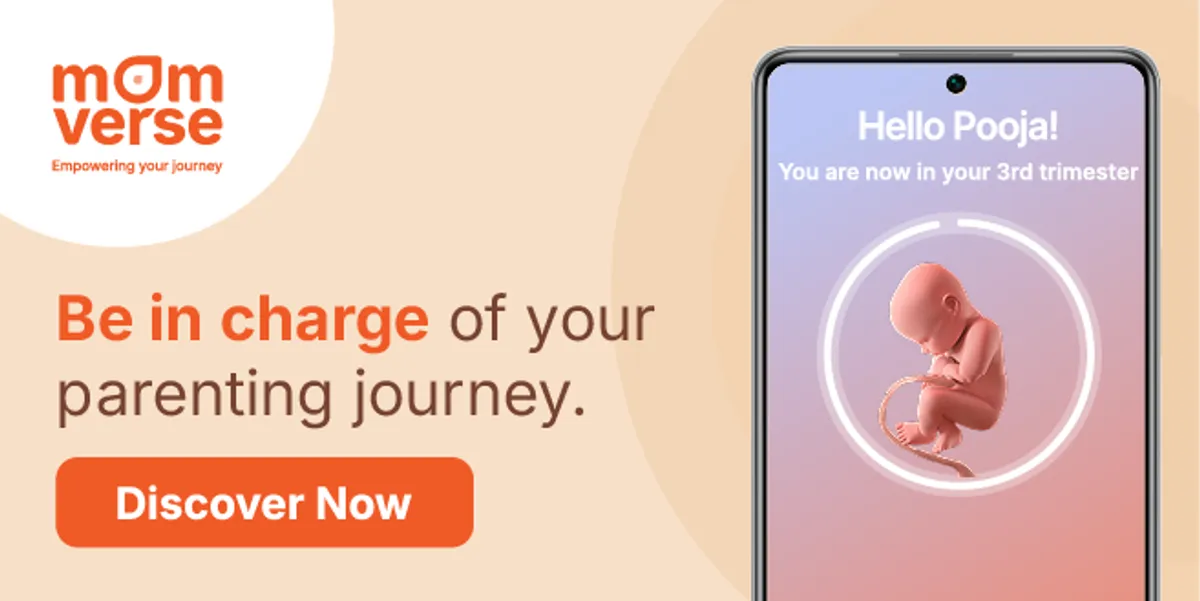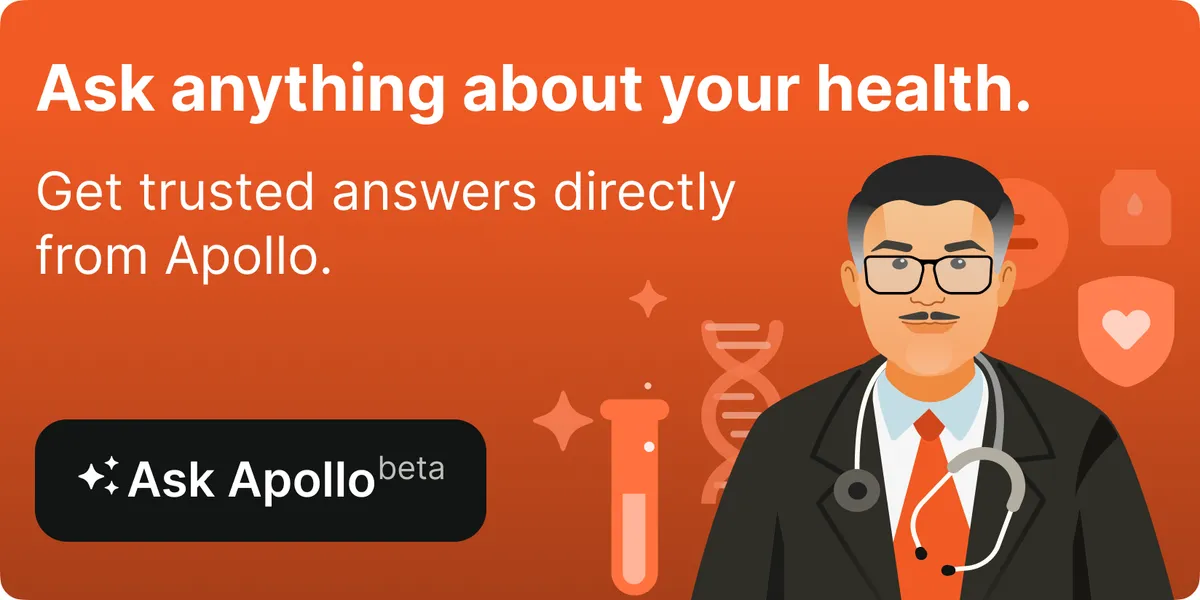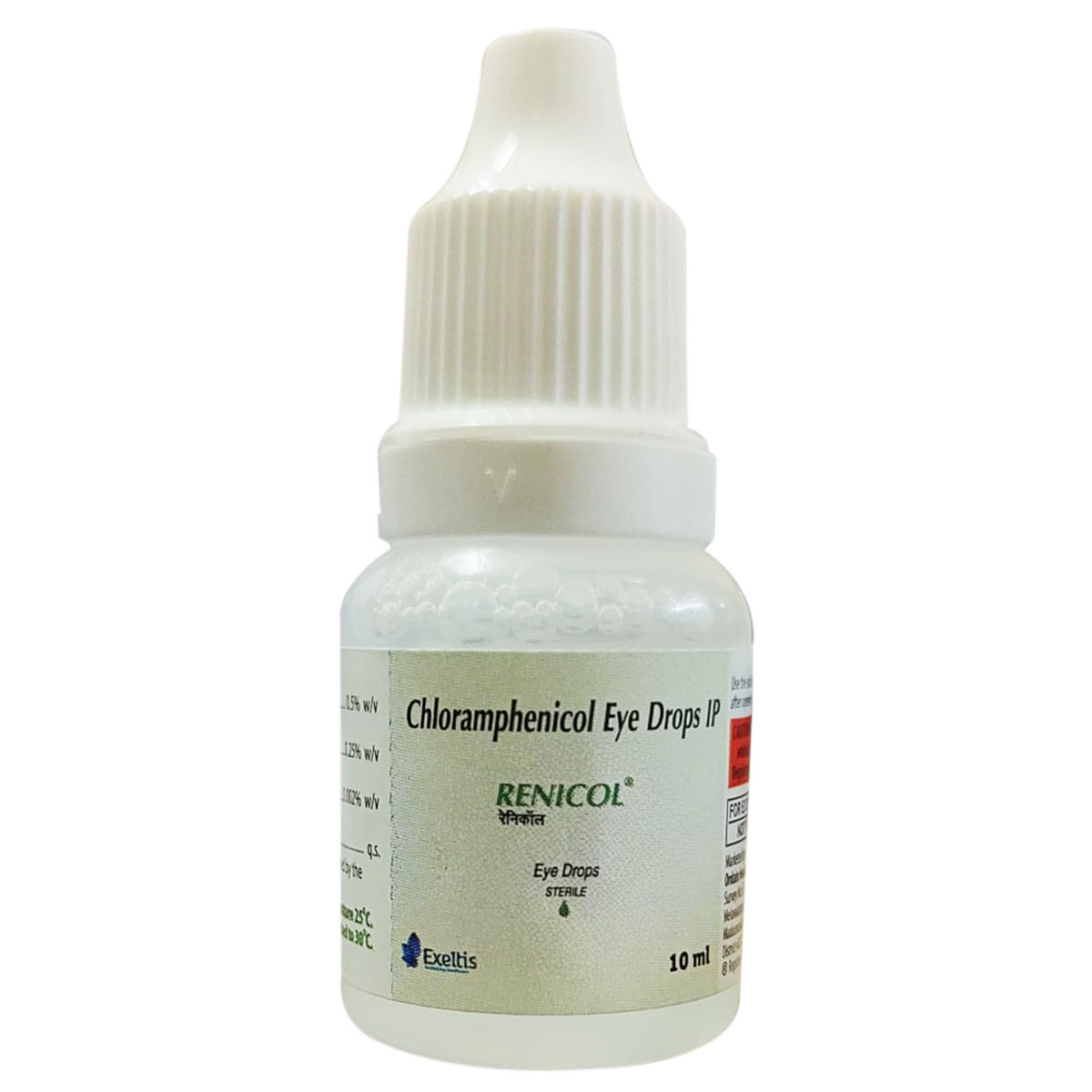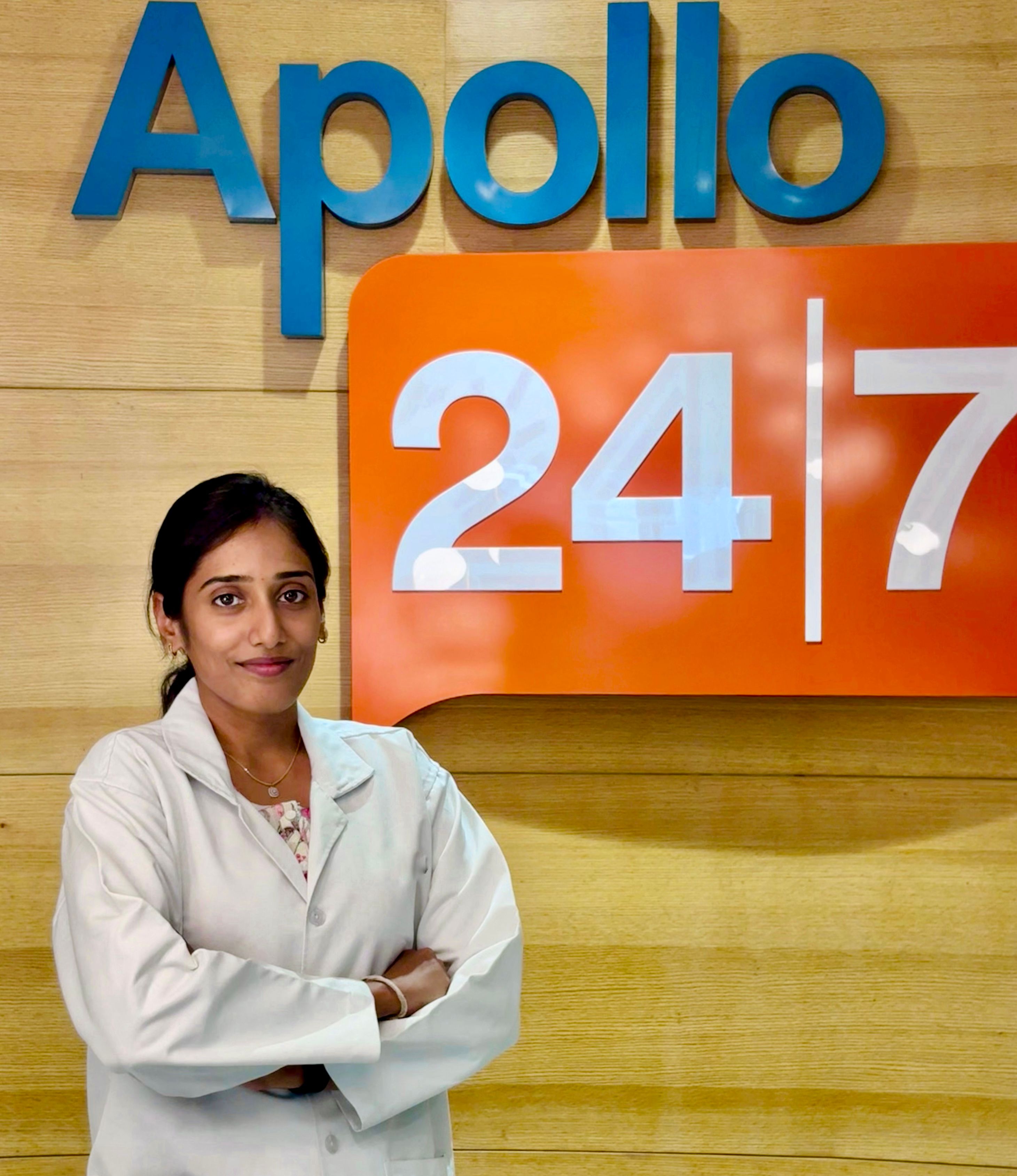क्लोरोकॉल आई ड्रॉप 10 मि.ली.




₹111
(Inclusive of all Taxes)
₹16.6 Cashback (15%)
Chlorocol Eye Drop is used to treat bacterial infections of the eye. It contains Chloramphenicol, which works by preventing the synthesis of nutrients essential for bacterial survival. Thus, it kills bacteria and treats bacterial eye infections. Common side effects of Chlorocol Eye Drop may include mild eye irritation, stinging sensation, and temporary blurred vision.
Know Your Delivery Time
Provide Delivery Location
 Prescription drug
Prescription drugWhats That

Secure Payment

India's Most Trusted Pharmacy

Genuine Products
Drug-Drug Interactions
Drug-Drug Interactions
Login/Sign Up
Taking Flibanserin with Chlorocol Eye Drop 10 ml may significantly increases the blood levels of flibanserin
How to manage the interaction:
Taking Chlorocol Eye Drop 10 ml with Flibanserin is not recommended, but can be taken together if prescribed by a doctor. However, consult your doctor if you experience dizziness, lightheadedness, and fainting. Do not discontinue any medication without consulting a doctor.
Taking lomitapide with Chlorocol Eye Drop 10 ml can significantly increase the blood levels of lomitapide.
How to manage the interaction:
Taking Chlorocol Eye Drop 10 ml with Lomitapide is not recommended, but can be taken together if prescribed by a doctor. However, consult your doctor if you experience fever, chills, joint pain or swelling, unusual bleeding or bruising, skin rash, itching, loss of hunger, weakness, nausea, vomiting, dark colored urine, light colored stools, and yellowing of the skin or eyes. Do not discontinue any medications without consulting a doctor.
Taking Chlorocol Eye Drop 10 ml with triazolam can increased the effects of Chlorocol Eye Drop 10 ml.
How to manage the interaction:
Taking Triazolam with Chlorocol Eye Drop 10 ml is not recommended, but can be taken together if prescribed by a doctor. In case you experience any unusual symptoms, consult a doctor. However, if you experience any unusual symptoms contact your doctor. Do not discontinue any medications without consulting a doctor.
Taking Chlorocol Eye Drop 10 ml and Ivacaftor may increase the blood levels of ivacaftor that increases risk of side effects.
How to manage the interaction:
Although taking Chlorocol Eye Drop 10 ml and Ivacaftor together can evidently cause an interaction, it can be taken if your doctor has suggested it. However, if you experience fever, chills, joint pain or swelling, unusual bleeding or bruising, skin rash, itching, loss of hunger, weakness, nausea, vomiting, abdominal pain, dark urine, pale stools, and/or yellowing of the skin or eyes contact a doctor. Do not stop using any medications without a doctor's advice.
Co-administration of acalabrutinib with Chlorocol Eye Drop 10 ml can significantly increases the blood levels of acalabrutinib.
How to manage the interaction:
Although there is a interaction between Chlorocol Eye Drop 10 ml and Acalabrutinib, but it can be taken together if prescribed by your doctor. However, if you experience symptoms like paleness, fatigue, dizziness, fainting, unusual bruising or bleeding, fever, chills, diarrhea, sore throat, muscle aches, shortness of breath, red or inflamed skin, body sores, and pain or burning during urination, call your doctor. Do not stop using any medications without talking to a doctor.
When Lemborexant is taken with Chlorocol Eye Drop 10 ml, may increase the blood levels of Lemborexant.
How to manage the interaction:
Although taking Chlorocol Eye Drop 10 ml and Lemborexant together can evidently cause an interaction, it can be taken if your doctor has suggested it. If you're having any of these symptoms like feeling down, having thoughts of hurting yourself, or having a headache, it's important to reach out to your doctor. Do not stop using any medications without talking to a doctor.
Taking Chlorocol Eye Drop 10 ml and Butorphanol can significantly increase the blood levels of Butorphanol that may increase the risk of side effects.
How to manage the interaction:
Although taking Chlorocol Eye Drop 10 ml with Butorphanol can possibly result in an interaction, it can be taken if your doctor has advised it. However, if you experience dizziness, lightheadedness, headache, flushing, fainting, and heart palpitations feeling tired, having trouble moving, difficulty swallowing or having seizures contact your doctor know. Do not stop using any medications without a doctor's advice.
Taking Chlorocol Eye Drop 10 ml with Voclosporin can increase the blood levels of voclosporin which increases risk of serious side effects.
How to manage the interaction:
Although taking Chlorocol Eye Drop 10 ml and Voclosporin together can evidently cause an interaction, it can be taken if your doctor has suggested it. If you have any unusual symptoms, it's important to contact a doctor. Do not stop using any medications without talking to a doctor.
When BCG vaccine is used with Chlorocol Eye Drop 10 ml, its effectiveness of BCG vaccine may be reduced.
How to manage the interaction:
Although there is a possible interaction between Chlorocol Eye Drop 10 ml and BCG vaccine, you can take these medicines together if prescribed by your doctor. However, consult your doctor if you experience any unusual symptoms. Do not discontinue any medications without first consulting your doctor.
When Everolimus is taken with Chlorocol Eye Drop 10 ml that may increase the risk of side effects.
How to manage the interaction:
Co-administration of Chlorocol Eye Drop 10 ml with Everolimus can result in an interaction, but it can be taken if a doctor has advised it. If you experience any unusual symptoms like persistent cough, fever, chills, mouth ulcers, paleness, unusual bruising, bleeding or blood in stools or urine, it's important to contact a doctor. Do not stop using any medications without talking to a doctor.
Drug-Food Interactions
Drug-Food Interactions
Login/Sign Up
Product Substitutes

Have a query?
FAQs
Disclaimer
Author Details
We provide you with authentic, trustworthy and relevant information
Buy best Health & Nutrition products by
Others
AYUR
HIMALAYAN ORGANICS
WELLBEING NUTRITION
HEALTHVIT
APOLLO LIFE
HORLICKS
PURE NUTRITION
GNC
APOLLO PHARMACY
HAPPILO
ORIGIN
ENSURE
KELLOGG S
Dabur
Optimum Nutrition
Pediasure
SWISSE
FAST&UP
PROHANCE
PROTINEX
ZANDU
MUSCLEBLAZE
CENTRUM
Muscletech
OZIVA
QNT
RITEBITE
SUGAR FREE
COMPLAN
KAPIVA
VOGUE WELLNESS
THE VITAMIN COMPANY
BAIDYANATH
BEAUTYWISE
CUREVEDA
GLUCON-D
PENTASURE
HIMALAYA
Millet Marvels
GROVIVA
LION
RASAYANAM
THE GOOD BUG
AYUSH KALP
CELEVIDA
MANNA
TRUE ELEMENTS
YOGABAR
BOURNVITA
CALCIMAX
ENERZAL
EQUAL
MY FITNESS
SAFFOLA
PATANJALI
SWADESHI
TONG GARDEN
ISOPURE
REVITAL
THREPTIN
B-PROTIN
DM
GALACT
HEALTHYR-U
MAXVIDA
NESTLE RESOURCE
ORS
BODYWELL
Diataal
ESSENTIAL
INJA
NEUHERBS
PINTOLA
Power Gummies
VIVAMOM
ESPERER
FITSPIRE
GRD
INDIA HEMP ORGANICS
JIVA
NUTRASWISS
PROLYTE
ULTRA D3
CALIBAR
HEALTH OK
LIVOGEN
ORGANIC INDIA
Performance Inspired
ZINCOVIT
BOOST
Bolas
CHARAK
D-PROTIN
ELLA FOODS
FRESUBIN
IN YOU
LACTARE
MACPROT
PRO-PL
PROTOTAL
QUAKER
ULTRA
VIDAVANCE
WEST COAST
BIOVIT
ENDURA MASS
GOFIGURE
HEALTHKART
LAMINO
MULMIN
NURTURE
OURDAILY
SRI SRI TATTVA
SUPRADYN
ARTH
Amocare
BAIDYANATH VANSAAR
BASIC AYURVEDA
BLACKMORES
BOLD CARE
DHOOTAPAPESHWAR
ECOPROT
FOLLIHAIR
HAMDARD
HOLLAND & BARRETT
JEENI
JOINTACE
KIDS-PRO
MAXIRICH
NUSOWIN
Nutriburst
QUANTO
RAWRX
RONNIE COLEMAN
ZEST
ACTIVE WOMEN
ALL GOOD
BERTOLLI
DIABLISS
DR. VAIDYA S
ETHIGLO
EVOCUS
FIGARO
GRADUATE
IMMUNACE
KABIPRO
KERAGLO
NUTRIRIGHT
NUTRIX
OBICURE
ONE SCIENCE NUTRITION
OSTOCALCIUM
PHONDAGHAT
POWERNOSH
PREGNACARE
PROTINULES
PULSE COPEWEL
PURE FOODS
RENO-PRO
REPL
RESHAPE
SAARAL
SIDDHAYU
SUPERYOU
TRUENORTH
WELLMAN
XTEND
ZEFRICH
Zen Essentials
ADCUMIN
ALBUMEN
AyurVAID
CEEPLUS
CHIC NUTRIX
ENRAIZ
FIXUPHEALTH
GLUCOVITA
KIDDOZE
LIVERIL
LOGIHAIR
MEDISLIM
NEPRO
OPTIFAST
PHAB
RELISH
SIMMOM
SLURRP FARM
V-NOURISH
WELLBABY
ACTIFIBER
APTAGROW
Apyprot
CADIHEP
CALBLOOM
CARCTOL
CHATURBHUJ
COERINGA
DIABETONE
DUREX
DYMATIZE
EASIFUD
EVACURE
FEROGLOBIN
FOLICA
GREEN CALLS
GROACTIV
HEPA PRO
HIGH PRO
HealthSetGo
JELLY VITA
JUENE
Knack
LIBERO
LOWKAL
LUPIN
MAN MATTERS
MENOPRO
MILO
MMS
NUTRISLIM
Nestle
Nourished
OVARYL
PEPTAMEN
REJUHAIR
ROSIFLEX
SEACOD
SIMYL
STEADFAST
SUNBLESS
SUPER GUMMY
SWEET N HEALTHY
Shelcal
TEACHER S GRACE
TRICOGRO
TURMIX
ULTIMATE NUTRITION
VASU
VICKS
WELLWOMAN
WHIT-CARE
WOW
AAYUSH
AIMIL
ALEMBIC PHARMA
ANANTA HEMP WORKS
APPLIED NUTRITION
ARMR
AXE
BD
BE BODYWISE
BECOZYM C
BETA
BINTHIN
BIOSLIM
BIOTIQUE
BONGRAFT
BUT-NANO
CAMIPRO-D
CAVENOR
CELERACT
COLRED
CURCUNUS
CURKEY
CUTE BELLY
D GERMS
DIAPRO
DR S NUTS & SEEDS
ELECTRICAL
FABOLITE
FEMARELLE
FEMOTONE
FORMALIN
FRANCH
GARLIC PEARLS
GARLICON
GLAZOVIT-PLUS
GLOSKIN
GLOWRIANCE
GLUCON-C
GREVIM ROYALE
GROWVIT
HI LIFE
HUNGARZ
I-PILL
IMUNBITES
IN2
ITWORKS
JINGA GOLD
KERASHINE
KLIN
KROMAGLO
Kinder
LACTIM
LACTOGROW
LIPZ
LIVON
MENOPACE
MENOREG
Vlado Sky Enterprise Pvt Ltd
Sun Pharmaceutical Industries Ltd
Nutritionalab Pvt Ltd
Macleods Pharmaceuticals Ltd
West Coast Pharmaceuticals Pvt Ltd
Intas Pharmaceuticals Ltd
Mankind Pharma Pvt Ltd
Abbott India Ltd
Emcure Pharmaceuticals Ltd
Meyer Organics Pvt Ltd
Zydus Healthcare Ltd
Lupin Ltd
Alkem Laboratories Ltd
Eris Life Sciences Ltd
Akumentis Healthcare Ltd
British Biologicals
La Renon Healthcare Pvt Ltd
ABBOTT HEALTHCARE PVT LTD
Zuventus Healthcare Ltd
Micro Labs Ltd
Hindustan Unilever Ltd
Pharmed Ltd
Corona Remedies Pvt Ltd
Modi Mundipharma Pvt Ltd
Apex Laboratories Pvt Ltd
Cipla Ltd
Dr Reddy's Laboratories Ltd
FDC Ltd
Indchemie Health Specialities Pvt Ltd
Leeford Healthcare Ltd
Bioceutics Inc
East West Pharma India Pvt Ltd
Alniche Life Sciences Pvt Ltd
Herbs Nutriproducts Pvt Ltd
Koye Pharmaceuticals Pvt Ltd
Torrent Pharmaceuticals Ltd
Alembic Pharmaceuticals Ltd
Aristo Pharmaceuticals Pvt Ltd
DR Johns Lab Pharma Pvt Ltd
USV Pvt Ltd
Guardian Healthcare Services Pvt Ltd
TTK Healthcare Ltd
Vasu Organics Pvt Ltd
Glanbia Performance Nutrition India Pvt Ltd
Fourrts India Laboratories Pvt Ltd
Pulse Pharmaceuticals
Raptakos Brett & Co Ltd
Morepen Laboratories Ltd
Innovcare Life Sciences Pvt Ltd
Linux Laboratories Pvt Ltd
Troikaa Pharmaceuticals Ltd
Cadila Pharmaceuticals Ltd
Bright Lifecare Pvt Ltd
Cipla Health Ltd
Wockhardt Ltd
Happilo International Pvt Ltd
Dabur India Ltd
Origin Nutrition Pvt Ltd
Primus Remedies Pvt Ltd
Zydus Cadila
Apollo Healthco Limited
Hexagon Nutrition Pvt Ltd
Kellogg India Pvt Ltd
Tablets India Ltd
Indoco Remedies Ltd
Medley Pharmaceuticals Ltd
Overseas Health Care Pvt Ltd
Shri Balaji Overseas
GlaxoSmithKline Consumer Healthcare Ltd
Nutricia International Pvt Ltd
Ordain Health Care Global Pvt Ltd
Sanofi India Ltd
Systopic Laboratories Pvt Ltd
Aeronutrix Sports Products Pvt Ltd
Ajanta Pharma Ltd
Daris Biocare
Health & Happiness (H&H) Trading India Pvt Ltd
Wanbury Ltd
Zee Laboratories Ltd
Aareen Healthcare Pvt Ltd
Emami Ltd
Radicool Pharmaceuticals Pvt Ltd
Wallace Pharmaceuticals Pvt Ltd
Biovitamins Pvt Ltd
Cadila Healthcare Ltd
Esmatrix Life Sciences Pvt Ltd
Ipca Laboratories Ltd
Klm Laboratories Pvt Ltd
Lloyd Healthcare Pvt Ltd
Naturell India Pvt Ltd
Sain Medicaments Pvt Ltd
Septalyst Lifesciences Pvt Ltd
Biorex Healthcare Pvt Ltd
Elbrit Life Sciences Pvt Ltd
Levin Life Sciences Pvt Ltd
Nestle India Ltd
Panacea Biotec Ltd
Qnt Sport India Pvt Ltd
Tas Med India Pvt Ltd
Zywie Ventures Pvt Ltd
Adret Retail Pvt Ltd
Delcure Life Sciences Ltd
Femura Pharmaceuticals Pvt Ltd
Gladstone Pharma India Pvt Ltd
Kepler Healthcare Pvt Ltd
Ronyd Healthcare Pvt Ltd
Shield Healthcare
Sportech Solutions
Sundyota Numandis Pharmaceuticals Pvt Ltd
Vogue Pharmaceuticals Pvt Ltd
ZYDUS WELLNESS LIMITED
Glenmark Pharmaceuticals Ltd
Icarus Health Care Pvt Ltd
Kosher Organics Pvt Ltd
Lincoln Pharmaceuticals Ltd
Maxamus Pharma Pvt Ltd
Novelty Healthshine Pvt Ltd
Akcent Healthcare India Pvt Ltd
Akesiss Pharma Pvt Ltd
Climic Health Pvt Ltd
Franco Indian Pharmaceuticals Pvt Ltd
Hbc Life Sciences Pvt Ltd
Med Manor Organics Pvt Ltd
Ozone Pharmaceuticals Ltd
Sanatra Healthcare Ltd
Shree Baidyanath Ayurved Bhawan Pvt Ltd
The Himalaya Drug Company
Avis Lifecare Pvt Ltd
Bion Therapeutics (I) Pvt Ltd
Entod Pharmaceuticals Ltd
Fast Foods-Food As Therapy
Gh Vision Care Life Sciences
Hs Aldem Healthcare
Lyceum Life Sciences Pvt Ltd
MMC Healthcare Ltd
Mova Pharmaceutical Pvt Ltd
Pfizer Ltd
Triton Healthcare Pvt Ltd
Elder Pharmaceuticals Ltd
Goddres Pharmaceuticals Pvt Ltd
Icon Life Sciences
LIONDATES IMPEX PVT LTD
Nouveau Medicament Pvt Ltd
Rasayanam Enterprises
Seven Turns Private Limited
Signova Pharma
Starus Pharmaceuticals
Steadfast MediShield Pvt Ltd
Unison Pharmaceuticals Pvt Ltd
Winmark Healthcare Pvt Ltd
AD ENTERPRISES
Adonis Laboratories Pvt Ltd
Alteus Biogenics Pvt Ltd
Comed Chemicals Ltd
Edura Pharmaceuticals Pvt Ltd
Foregen Healthcare Ltd
Mediart Life Sciences Pvt Ltd
Strides Shasun Ltd
Zelleven Healthcare Pvt Ltd
Biological E Ltd
Cachet Pharmaceuticals Pvt Ltd
Era Pharmaceuticals Pvt Ltd
Fine Formulations
Fresenius Kabi India Pvt Ltd
Galaxus Pharmaceuticals
HW WELLNESS SOLUTIONS PVT LTD
Hetero Healthcare Pvt Ltd
Medicure Life Sciences Pvt Ltd
Medishri Healthcare Pvt Ltd
Mrl Pharma Opc Pvt Ltd
Nutraferon Pvt Ltd
Olamic Pharma Pvt Ltd
Procter & Gamble Health Ltd
Qurewell Health Science Pvt Ltd
RPG Life Sciences Ltd
SPROUT LIFE FOODS PVT LTD
Southern Health Foods Pvt Ltd
Stedman Pharmaceuticals Pvt Ltd
Votary Laboratories (India) Ltd
Zerico Lifesciences Pvt Ltd
An Pharmaceuticals Pvt Ltd
Blisson Mediplus Pvt Ltd
Butson Biosciences
Jupiter Life Sciences Pvt Ltd
Marico Ltd
Mascot Health Series Pvt Ltd
Medsea Healthcare Pvt Ltd
Mondelez India Foods Pvt Ltd
Oaknet Healthcare Pvt Ltd
Osren Healthcare Pvt Ltd
Pharmanova Specialties Pvt Ltd
Senechio Pharma Pvt Ltd
Serum Institute Of India Pvt Ltd
Spa Newtraceuticals Pvt Ltd
TANVI HEALTH CARE
Uniwell Medicare Pvt Ltd
Uth Healthcare Pvt Ltd
Whole Earth Brands Private Limited
Affluential Pharmaceuticals Pvt Ltd
Albert David Ltd
Alka Pharmaceuticals
Anthem Bio Pharma
Centaur Pharmaceuticals Pvt Ltd
Converge Biotech Pvt Ltd
Ethinext Pharma
Instaray Pharmaceuticals
Jenburkt Pharmaceuticals Ltd
Kinesis Pharmaceuticals Pvt Ltd
Maxis Healthcare (I) Pvt Ltd
Medilab India
Medrexcare Pharma Pvt Ltd
Neomedix Healthcare India Pvt Ltd
Newtrimed Healthcare Pvt Ltd
Oriva Life Sciences Pvt Ltd
Patanjali Ayurved Limited
Pristine Pearl Pharma Pvt Ltd
Seagull Pharmaceutical Pvt Ltd
Sinsan Pharmaceuticals Pvt Ltd
Swadeshi Ayurved
TONG GARDEN FOOD PRODUCTS INDIA PVT.LTD.
Vix Pharma International
Biokindle Lifesciences Pvt Ltd
British Life Sciences Pvt Ltd
Calren Care Lifesciences Pvt Ltd
Celagenex Research (india) Pvt Ltd
Charak Pharma Pvt Ltd
Dukes Lab
GlaxoSmithKline Pharmaceuticals Ltd
Grandcure Healthcare Pvt Ltd
Hind Bioscience
Incite Pharmaceuticals
Juggat Pharma Ltd
Kuresys Labs Pvt Ltd
Maxford Labs Pvt Ltd
Nexgen Rx Life Science Pvt Ltd
Novartis India Ltd
Nutrigold India Pvt Ltd
Samarth Life Sciences Pvt Ltd
Shreya Life Sciences Pvt Ltd
Stanley Healthcare Pvt Ltd
Sutram Ayurveda Pvt Ltd
Syndicate Life Sciences Pvt Ltd
Truhealthy Llp
Zenska Life Sciences Pvt Ltd
Adroit Biomed Ltd
Anglo French Drugs & Industries Ltd
Apellon Biotech
Azzurra Pharmaconutrition Pvt Ltd
Biozenesis Healthcare
Dwd Pharmaceuticals Ltd
Elinor Pharmaceuticals (P) Ltd
Gates India Pvt Ltd
Healthon Pharmaceuticals Pvt Ltd
Inolife Healthcare
Intra Labs India Pvt Ltd
J B Chemicals & Pharmaceuticals Ltd
Jagsonpal Pharmaceuticals Ltd
Jubilant Lifesciences Ltd
Malook Pharmaceuticals Pvt Ltd
Medilead Pharmaceuticals
Medopharm Pvt Ltd
Medsol India Overseas Pvt Ltd
Montana Remedies Pvt Ltd
Nutragenix Healthcare Pvt Ltd
Oxirich Healthcare Pvt Ltd
Parnasa Mediworld Pvt Ltd
Premier Nutraceuticals Pvt Ltd
Rene Lifescience
Resolute Healthcare
Scorleon Pharma
Shankus Acme Pharma Pvt Ltd
Stanwell Lifesciences Pvt Ltd
Sunways (India) Pvt Ltd
Universal Nutriscience Pvt Ltd
Vintage Labs
Waterley Pharmaceuticals Pvt Ltd
APOLLO HEALTHCO LIMITED
Aar Ess Remedies Pvt Ltd
Aesthetic Nutrition Pvt Ltd
Alvio Pharmaceuticals Pvt Ltd
Astrum Healthcare Pvt Ltd
Axenic Healthcare
Azveston Healthcare Pvt Ltd
BSA Pharma Inc
Bayer Pharmaceuticals Pvt Ltd
Brio Bliss Life Science Pvt Ltd
Canixa Life Sciences Pvt Ltd
Das Foodtech Private Limited
Desons Therapeutics Pvt Ltd
Dhamus Pharma
East India Pharmaceutical Works Ltd
Evexia Healthcare Pvt Ltd
Fusion Health Care Pvt Ltd
Global Health Fit Retail (India) Llp.
Inja Wellness
Iriska Pharmaceuticals Pvt Ltd
Jiva Ayurvedic Pharmacy Ltd
Maverick Pharma Pvt Ltd
Medgen Drugs And Laboratories Pvt Ltd
Mirasure Life Sciences Pvt Ltd
SPECIALITY SUPPLEMENT
CALCIUM
IRON
VITAMIN D
COLLAGEN
VITAMIN B12
VITAMIN C
FISH OIL OMEGA
Adult Nutrition Drink
MULTIVITAMIN
VITAMIN B
Kids Nutrition Drink
WHEY PROTEIN
SEXUAL HEALTH SUPPLEMENT
ZINC
VITAMIN B9
ENERGY DRINK
DRY FRUIT
SPECIALITY NUTRITION DRINK
Protein Powder
HERBAL JUICE
Protein Bar
WOMEN & MOTHER NUTRITION DRINK
ORS
VITAMIN E
SUGAR SUBSTITUTE
Prebiotic & Probiotic
Chyawanprash
BREAKFAST CEREAL
MAGNESIUM
DIABETIC NUTRITION DRINK
BIOTIN
PLANT PROTEIN POWDER
Honey
WEIGHT LOSS
Fat Burner
VITAMIN B1
Apple Cider Vinegar
MELATONIN
APPETITE STIMULANT
NUT & SEED
Peanut Butter
AMINO ACID
Flax seed Oil
INFUSION TEA
Meal Replacement
Instant Food
Pre Workout
Ashwagandha
OATS
Olive Oil
L-Carnitine
Mass Gainer
VITAMIN A
CREATINE
CURCUMIN
DISKETTE
POTASSIUM
MILLETS & CEREALS
Shilajit
VITAMIN B6
VITAMIN K
ARGININE
COENZYME Q10
Cod Liver Oil
Glutathione
Chromium
MILK THISTLE
Appetite Suppressant
VITAMIN B2
L-Glutamine
MORINGA
GARCINIA CAMBOGIA
GREEN TEA
SPIRULINA
WEIGHT GAINER
ALPHA-LIPOIC ACID
GLUCOSAMINE
GOKSHURA
BCAA Protein Powder
GILOY
NEEM
SAFFRON
SELENIUM
TRIPHALA
Tulsi
VITAMIN B3
VITAMIN B5
Brahmi
CANDIES
FRUIT JUICE
Face Gel
Specialty Supplements
WHEAT GRASS POWDER







